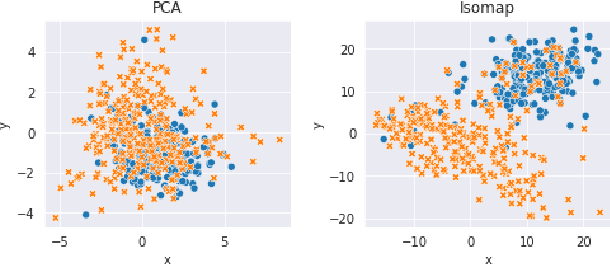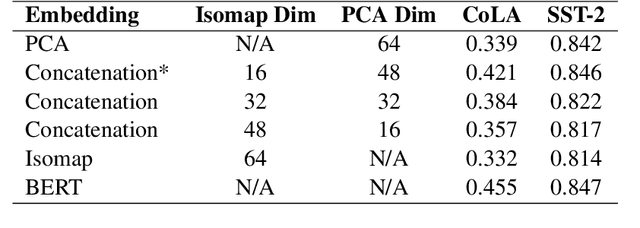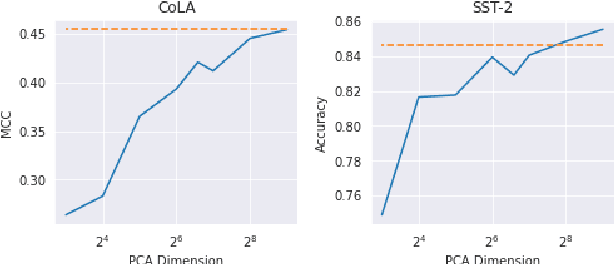On Geodesic Distances and Contextual Embedding Compression for Text Classification
Paper and Code
Apr 22, 2021


In some memory-constrained settings like IoT devices and over-the-network data pipelines, it can be advantageous to have smaller contextual embeddings. We investigate the efficacy of projecting contextual embedding data (BERT) onto a manifold, and using nonlinear dimensionality reduction techniques to compress these embeddings. In particular, we propose a novel post-processing approach, applying a combination of Isomap and PCA. We find that the geodesic distance estimations, estimates of the shortest path on a Riemannian manifold, from Isomap's k-Nearest Neighbors graph bolstered the performance of the compressed embeddings to be comparable to the original BERT embeddings. On one dataset, we find that despite a 12-fold dimensionality reduction, the compressed embeddings performed within 0.1% of the original BERT embeddings on a downstream classification task. In addition, we find that this approach works particularly well on tasks reliant on syntactic data, when compared with linear dimensionality reduction. These results show promise for a novel geometric approach to achieve lower dimensional text embeddings from existing transformers and pave the way for data-specific and application-specific embedding compressions.
 Add to Chrome
Add to Chrome Add to Firefox
Add to Firefox Add to Edge
Add to Edge